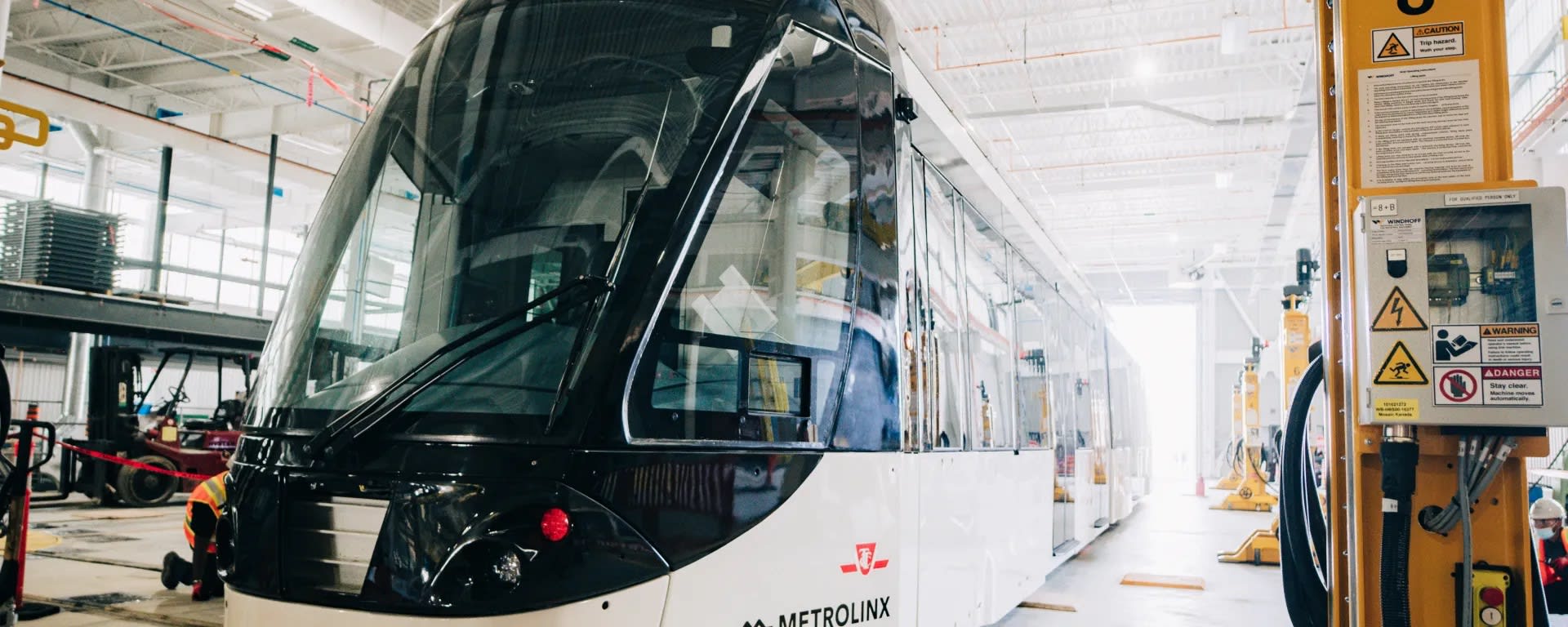Earth Day 2022: How two Metrolinx LRT projects are going green
Metrolinx LRT projects are making sustainability a priority
Apr 22, 2022
Sustainability is at the heart of every transit project.
Metrolinx is in the middle of Ontario’s biggest transit expansion in history – and it’s all about getting cars off the road.
From expanding GO Transit service, to building new light rail and subway lines, more people will be riding electric powered vehicles than ever before. Thanks to growing cycling, pedestrian and ride share infrastructure, it won’t be the same drive and park transit system of the past either.
But what’s happening today?
Construction is in full swing on two of the Greater Toronto Area’s newest transit lines, and like any project, that means the potential for waste creation.
While building the brand new light rail transit (LRT) lines along Hurontario Street and Finch West Avenue means environmentally friendly transit for generations to come, crews are also working hard to protect the environment today.
A look inside the Finch West LRT construction site at Humber College North Campus. (Metrolinx image)
Here are some of the environmental achievements on the Finch West and Hurontario LRT projects in the last year.
Waste diversion
- Eighty per cent of waste produced during Hazel McCallion LRT construction was diverted from landfill
- Waste diversion means reusing, recycling, or composting materials that would otherwise be buried in landfill
- Approximately 80 per cent of the over 207,000 m3 of dirt excavated for the Finch West LRT in 2021 was sent away for reuse
- This is vital for community protection as it can improve the elimination of leeching and contamination of soil and water when more waste is diverted from landfill
According to the construction experts at Mosaic Transit Group, the constructor of the Finch West LRT project, the soil diverted from landfill can be used as fill to rehabilitate old or abandoned pits and mines.
In fact, soil from the Finch West project has been used by other major infrastructure projects like the Lincolnville GO Station, and as fill for pits in Mount Albert and Whitchurch-Stouffville.
A dump truck taking a load of soil from a Finch West LRT construction site. (Metrolinx image)
Protecting vegetation
The Hazel McCallion crews are working together with City partners and the local conservation authority to protect trees during construction and remove others where necessary for infrastructure.
- Following municipal guidelines, for every tree removed, a new one will be replanted as improvements are made to the surrounding natural landscape
- Prior to removing any trees, they are inspected by a biologist to ensure any nesting birds or existing habitats are not disturbed
- A full environmental report can be found on the Hazel McCallion LRT project page
An example of trees Metrolinx has replanted in the GTA as part of sustainability commitments. (Metrolinx image)
On the Finch West LRT side of things, the team at Mosaic is also taking steps to protect trees and shrubs.
- In 2021, the Finch West team planted 385 trees and 4,600 plants
- The Finch West maintenance and storage facility also has a green roof made up of a diverse variety of hardy and drought resistant plants
Sustainable suppliers
- Seventy per cent of suppliers on the Hurontario LRT project meet strict sustainability criteria
- The project has standards in place around the climate resiliency practices of vendors and suppliers. This is a vital part in ensuring the overall sustainability of a construction project
Waste diversion, vegetation protection and sustainable suppliers are key pillars of Metrolinx transit projects. (Metrolinx image)
Batteries and e-waste
- Twelve kilograms of batteries and electronic waste were recycled from the Hurontario project last year
- Recycling batteries and electronics reduces the amount of material needed to be manufactured or mined for new devices, thus reducing the overall consumption of energy and natural resources
- Additionally, most electronics contain toxic materials such as lead or mercury, and it’s important to keep these out of the environment
by Erika D’Urbano Communications senior advisor, Alex Iantorno Metrolinx communications Senior Advisor
